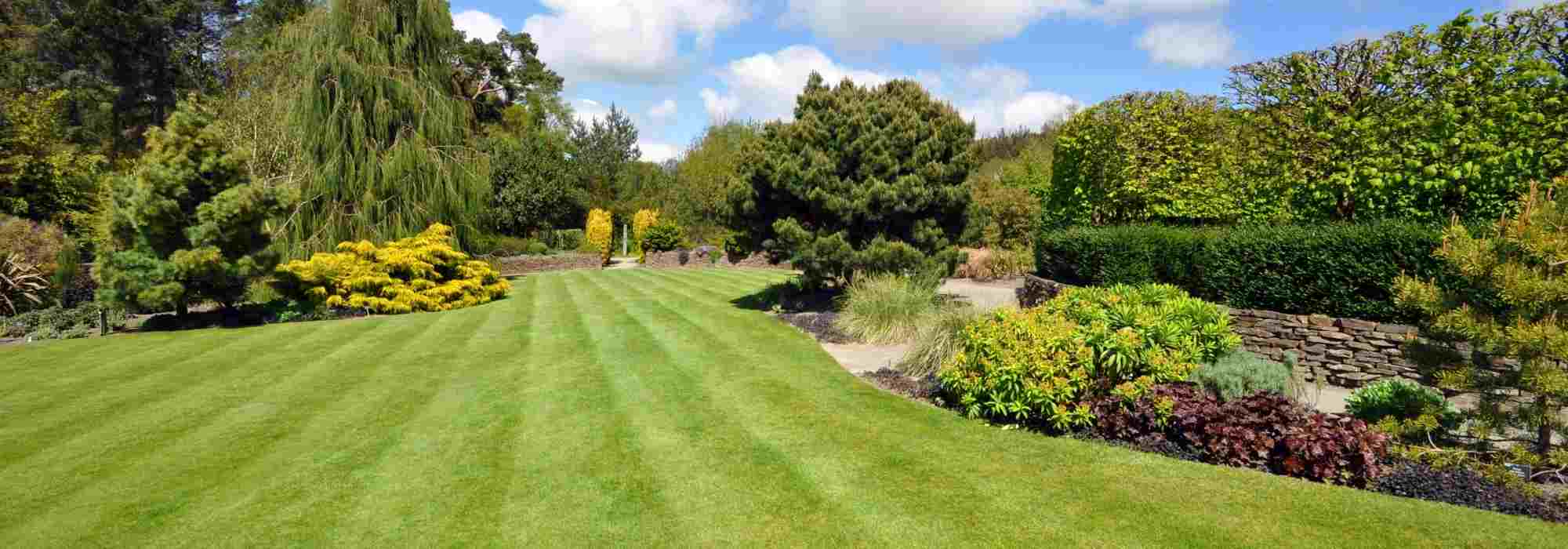
Flat garden design ideas
How to add depth to your garden?
Contents
Not everyone is lucky enough to have a hilly garden, brimming with hidden nooks and surprises around cleverly placed stairs… Most of us actually have a flat garden, usually organised around a lawn and enhanced with several flowerbeds. This level garden may seem monotonous and lacking in character. However, a flat garden can be anything but boring when designed using landscaping tips to give it personality, charm… and depth!
So how can you break the monotony of a flat garden? Whether your garden is small or large, we provide you with some keys to visually transform it, adding volume to its lines, structure, and playing with colours and plant materials to ensure your flat garden creates a surprise!
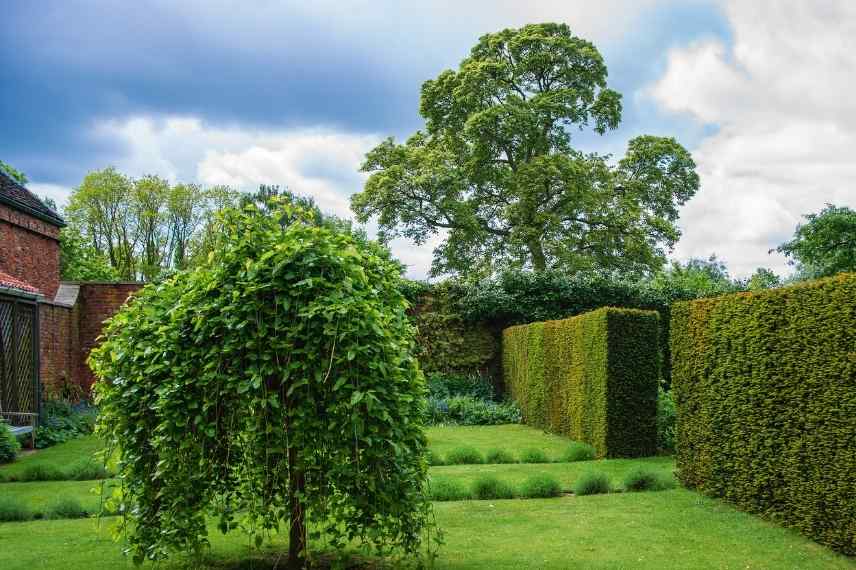
Hedges, structuring lines, boundaries, and unusual silhouettes in this small garden create a much less flat decor than it appears
Shape the terrain
Without having to completely excavate an entire area to alter its topography (which can be quite costly, depending on the size of your garden), you can add volume by making small adjustments through levelling, inserting masonry elements, or using certain “tricks” to make your garden appear less flat.
-
By creating mini mounds
You can easily slightly excavate the soil in a small area to create a gentle slope in your garden. The excavated soil can be used to form a soft mound or to create a raised bed. Conversely, you can add soil to form a slight mound. If you plan to have a raised terrace, one or two steps are sufficient to create an interesting elevation for planting.
-
By creating raised beds
The raised bed is one of the most effective tricks to change the flat appearance of your garden: it redefines the horizon perceived by the eye. The added volume of soil also allows for the installation of plants that require well-drained substrate, such as exotic plants, Mediterranean plants, etc. If the height is significant, soil retention can be achieved using various materials (wood, stone, or even metal) that enhance the area’s ornamentation. Otherwise, the volume of soil can gently taper down to the lawn, for example, and care should be taken to maintain the border. On a large bed, you can enhance it with some rockeries.
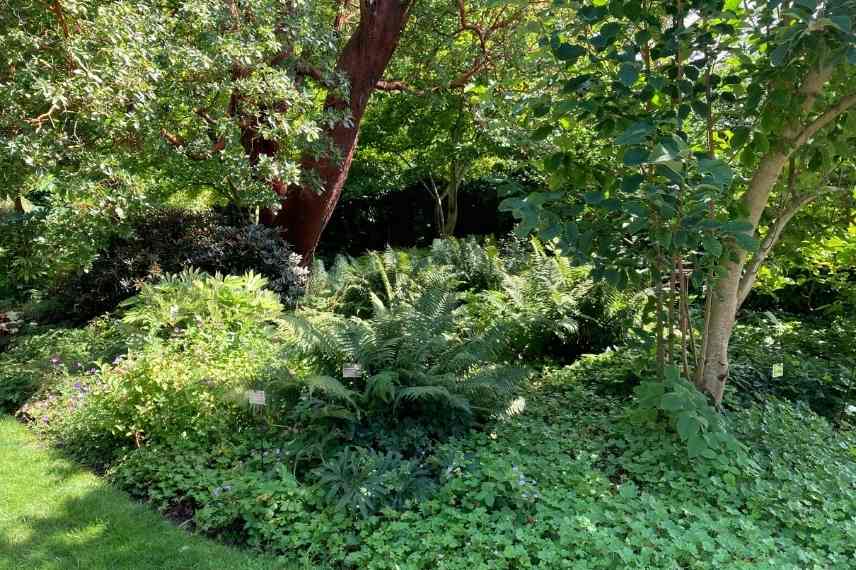
A large raised bed at the base of trees helps create relief and volume (© Gwenaëlle David)
-
With hardscaping
Installing a small wall is a quick way to create relief. This wall can be placed in line with a terrace, along a mule path or a curved path, framing a corner of a pool, or even within the garden to visually dress it with trailing plants, for example, when a small mound has been created. It can be considered in all garden styles, depending on the stone used. Gradines, these long and low steps, are also useful for countering too much uniformity in the terrain: again, once excavation is done, one or two steps will bring relief to the area.
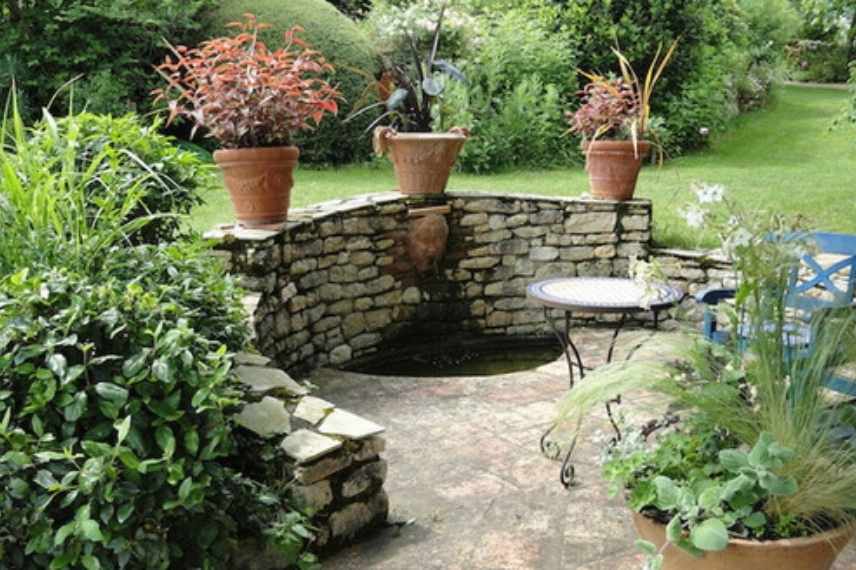
Enhancing a terrace or a small area of the garden with a wall instantly creates relief! (© Wicker Paradise)
-
Through borders
The various materials used for the borders of beds or paths are mini volumes that, while delimiting an area, make the terrain less uniform and introduce often contrasting colours. Wooden sleepers, stacked logs, slate strips, large pebbles, or preformed concrete or steel borders are high enough to provide a visual marker that blurs the sensation of flatness.
-
By planting at the base of a tree
This is one of the quickest options to implement and is very useful in small gardens, but it will only be optimal with trees that have a taproot system, or by carefully choosing perennials that are not afraid of root competition.
-
By inserting XXL beds
Around the edges of the garden, in a mixed-border style for large and medium gardens to create a beautiful thickness and elevation, or to blur the contours along paths, etc. We will discuss this further later in the article.
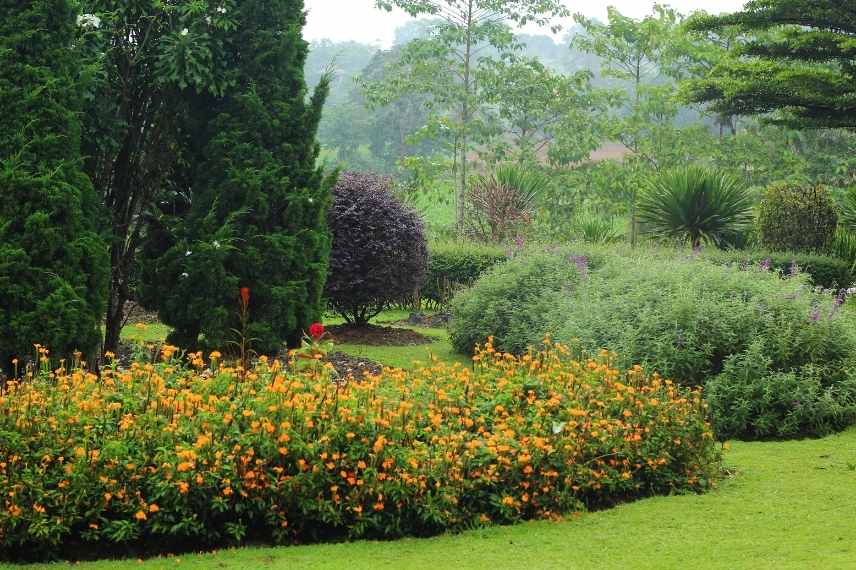
-
With a pond
Integrating a water feature into a flat garden is another way to animate it, especially by placing it slightly lower, as the excavated soil can be used to form a small mound elsewhere in the garden. The bank plants and submerged plants will add verticality, which is ideal for our too flat garden! This can be a pond or a small to medium-sized water feature.
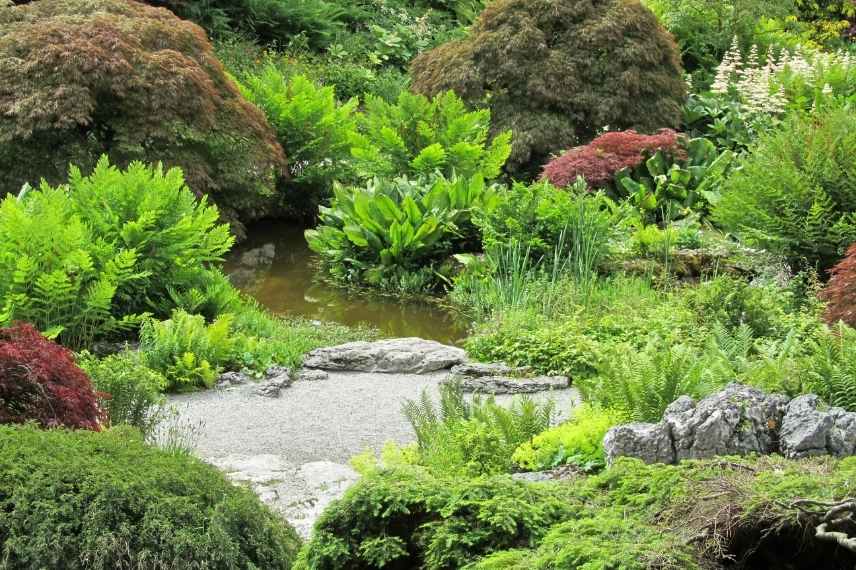
The pond, sized appropriately for the overall area of the garden, often features rockeries, enhancing the notion of relief.
-
With a water mirror
It enhances large contemporary gardens and fits perfectly into a large flat area of a naturalistic garden. It is a very aesthetic feature, and paradoxically, although built at ground level, it brings movement by reflecting the passing clouds and the swaying of large trees. The water mirror thus serves as an excellent visual trompe-l’œil to create the illusion of relief and disrupt the uniformity of a garden.
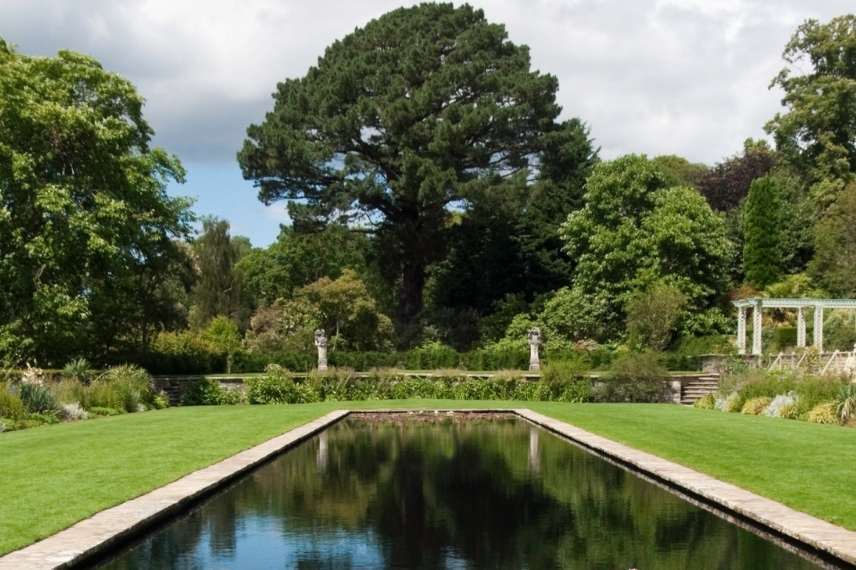 The water mirror, suitable for large areas, offers interesting reflections
The water mirror, suitable for large areas, offers interesting reflections
Structure the space
The idea is to divide the garden into several sub-spaces so it is not perceived as a single entity, encouraging a stroll through the different areas created. This artificially adds relief, as compartmentalising in this way fosters surprise and incorporates varying horizon heights. The larger the garden, the more it can be divided into multiple spaces. These areas can be dedicated to different functions (play area, relaxation space, dining area, vegetable garden…). In a small garden, the same approach is taken, albeit on a smaller scale, often favouring two zones.
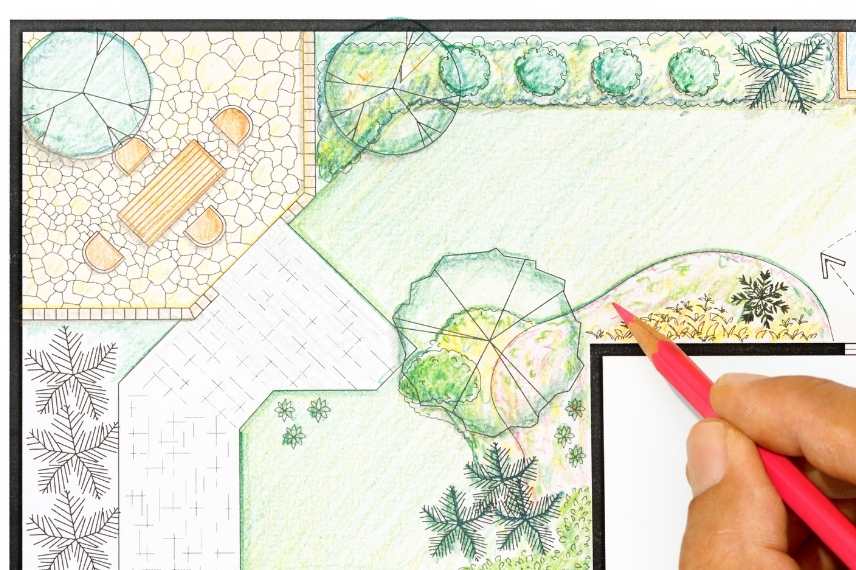
Before designing your flat garden, more than ever, use a plan to sketch and accurately represent the different spaces to be created.
- With plant partitions: in a large garden, different “plant rooms” can be created, each styled with different plants. The effect is stunning, as these partitions rhythmically enhance the garden when formed with evergreen or deciduous shrubs (conifers, boxwood, hornbeam…). The height of the plants is a matter of taste, but the larger the garden, the more one can afford to use tall plants. These space delimitations can be trimmed or left natural, with the varying heights of trimmed hedges creating a rhythm that adds relief. Ultimately, these plant partitions can be arranged in geometric patterns or in a more natural style using curves.
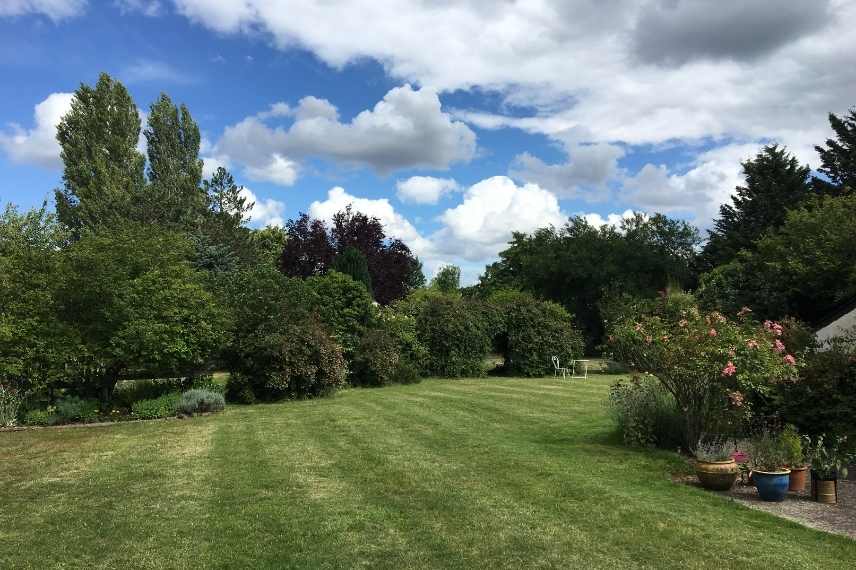
A large garden benefits from offering plant partitions, as seen here, with numerous evergreen shrubs (© Gwenaëlle David)
- With mineral or wooden partitions: by placing attractive lattices in a small garden or generous fences in a large garden, by planting some slate stakes vertically, installing large stone troughs, or creating willow or hazel hurdles in a natural garden… Here are some easy tips to introduce vertical elements into your garden, thus changing the perspective and making it appear less monotonous.
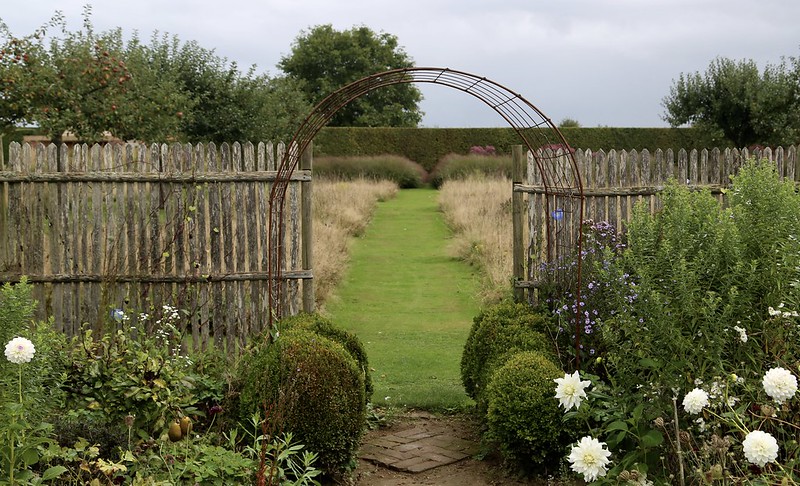
Here, a fence adorned with a weathered arch delineates two areas of the garden, leading to a more natural zone.
- With pergolas and arbors: they create a high stratum of climbing plants running over wooden or metal structures, often allowing a transition from one environment to another.
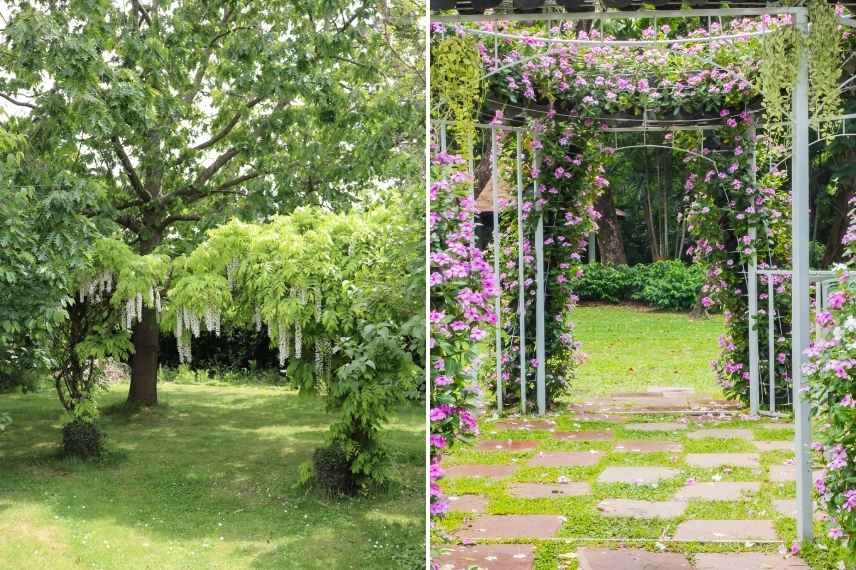
Install some climbing plants on trellises that will elegantly dress the space: a wisteria, for example (© Gwenaëlle David), or a rose arch.
- Incorporating the vegetable garden: the vegetable garden, along with the orchard, are two areas that, due to their functionality and elements, naturally structure the space (alignments of trained or free-form fruit trees, raised vegetable beds, or beds bordered with boxwood, for example). You will also often find a garden shed or cabin, a greenhouse, and other small built elements that add substance, and even colour if painted, thus providing relief to your flat garden.
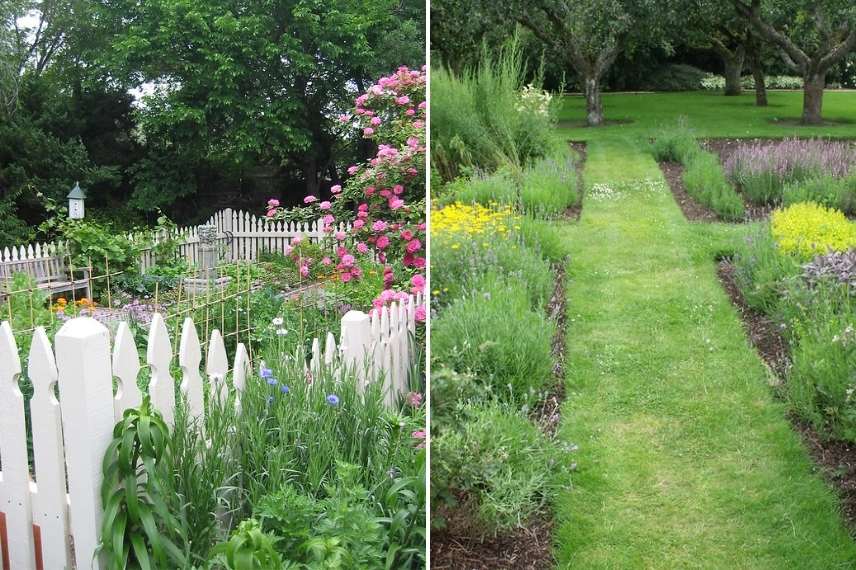
An example of a small vegetable garden enclosed by painted barriers on the left © Rhonda Fleming Hayes, and four large aromatic beds installed on a lawn, extended by the orchard (© Elliott Brown)
- Using pathways as visual markers: paths are not only useful for moving around without getting your feet wet, but they also form part of the garden’s decor and structure. In a flat garden, curved pathways create a visual illusion of undulation, thus movement. Geometric pathways that intersect perpendicularly are also effective in a contemporary or classic garden, whether small or large.
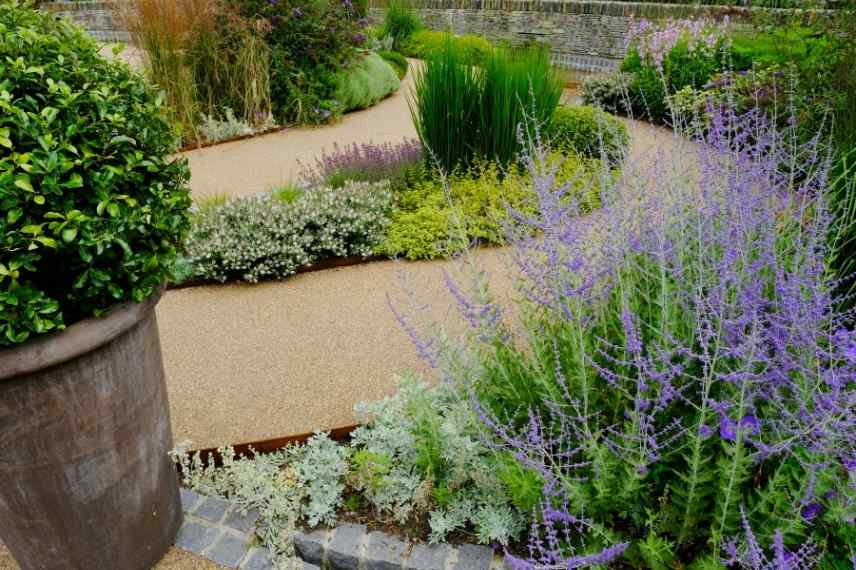
- The very surface of your paths and terraces contributes to creating relief as you use materials of different textures and colours such as stone sleepers, wood chips, or gravel, and decking in wood or slabs on a terrace: you create diversions in the environment and stimulate the eye.
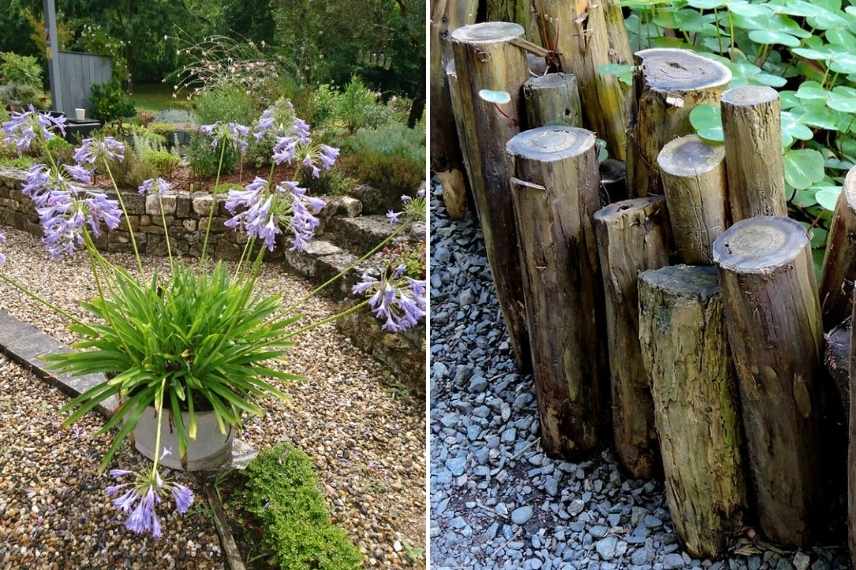
The different shades of gravel and surfaces, along with borders of varying heights, also help soften the flatness of the garden (photo on the left © C. Lalanne)
- Your garden furniture can play a role in the perceived volume, especially in a small or medium garden where it will stand out particularly. It will then be highlighted to add volume to the space (through the choice of bright colours or materials). Pots, planters, and other garden ornaments will also be major decorative elements if chosen in large sizes, tall, or even disproportionate compared to the space, thus creating relief.
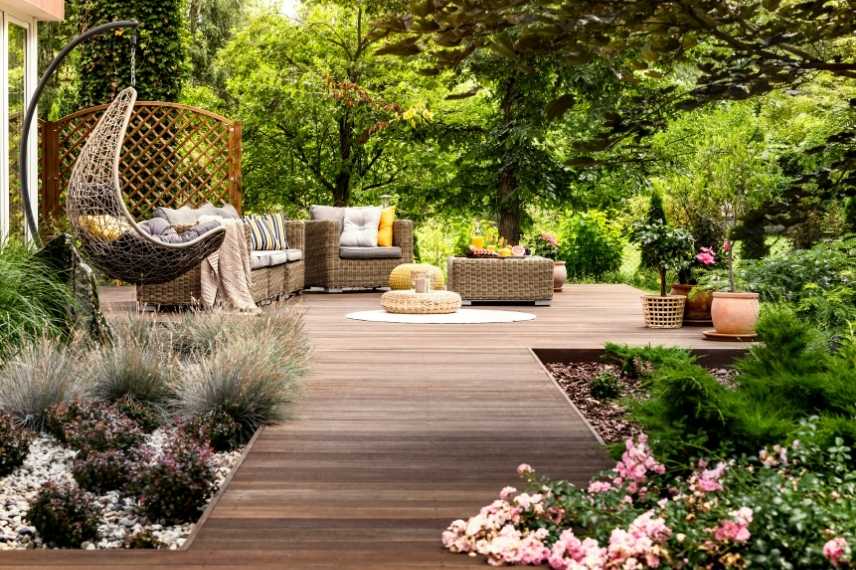
Here, generous furniture, a tree stratum, wooden decking, and plants make the flat design of the garden forgettable.
- Finally, a standout decorative element can also create a visual surprise: a vintage staircase, a vertical wooden structure, a giant willow construction, a statue, a bird perch, a large sculpture in a contemporary garden, an oversized element in Corten steel… the options are numerous!
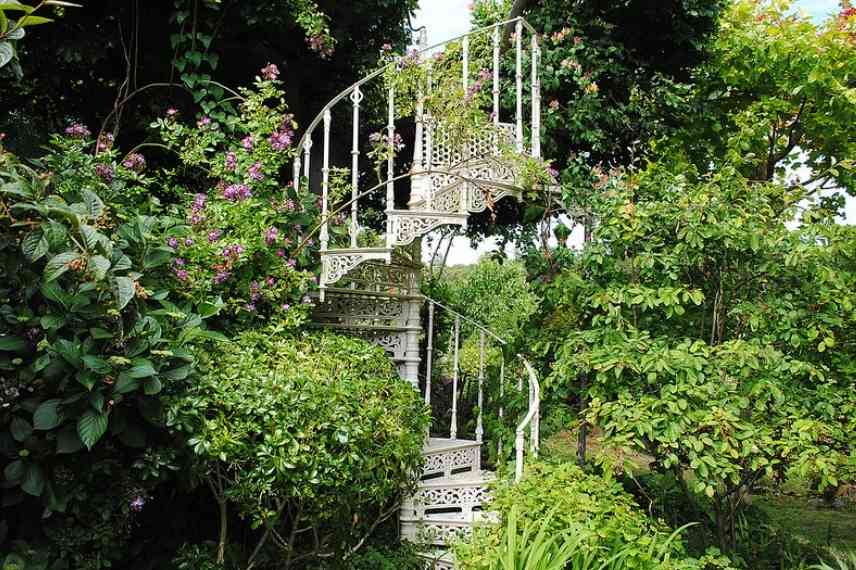
This retro staircase amidst abundant vegetation offers an interesting vertical element that mitigates the monotony of the flat relief (© Mark)
Make the most of the plants
Plants are the primary force in your garden! Choosing plants with different shapes and colours, you can easily introduce graphic elements, depth, and character into your garden.
- Prioritise tall (trees) and medium (bushes) layers: they add beautiful volume to the landscape you are creating. They are the first architectural elements in your garden, providing substance (especially the importance of evergreens), colour… they naturally create relief. This should be your priority if you are starting with a flat and bare garden: Plant, plant… as trees only reach their full size after about 10 years.
- Mix shrub shapes: whether strictly trimmed into balls or geometric topiaries, or left as hedges or free clusters. Also mix different habits to create distinct plant masses that give body to your garden (weeping trees, columnar trees, pyramid conifers, arching spireas, etc.).
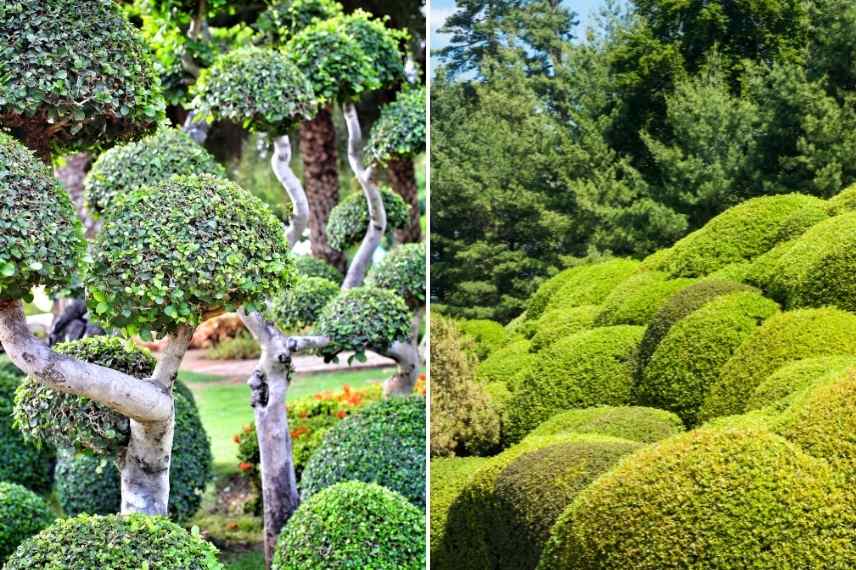 Highly structured shapes, ball-shaped topiaries… all add volume and originality to your flat garden
Highly structured shapes, ball-shaped topiaries… all add volume and originality to your flat garden
- Make us of the abundance and movement of grasses: these plants are simply magical for introducing movement, creating undulations that energise the horizon. The taller varieties are perfect for large gardens, while fescues, Carex, and all low grasses are ideal for smaller spaces…
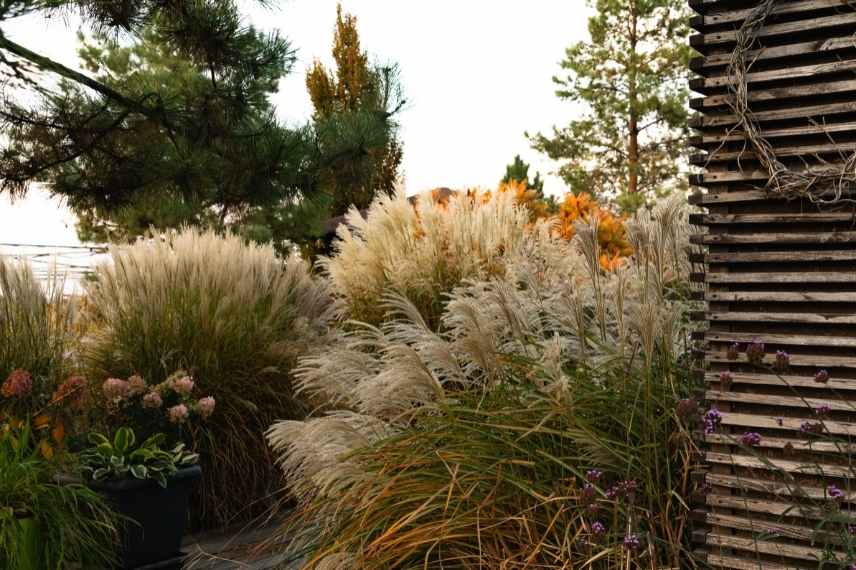 Tall grasses like Miscanthus bring volume, abundance, light, and movement to the garden.
Tall grasses like Miscanthus bring volume, abundance, light, and movement to the garden.
- Dare to dramatise your flat garden: you can add a lot of character to a uniform area by planting large plants, either through expansive trees (weeping willow, Catalpa, oaks…), creating majestic clusters (of bamboo, birches…), inserting exotic trees, or integrating creeping plants…
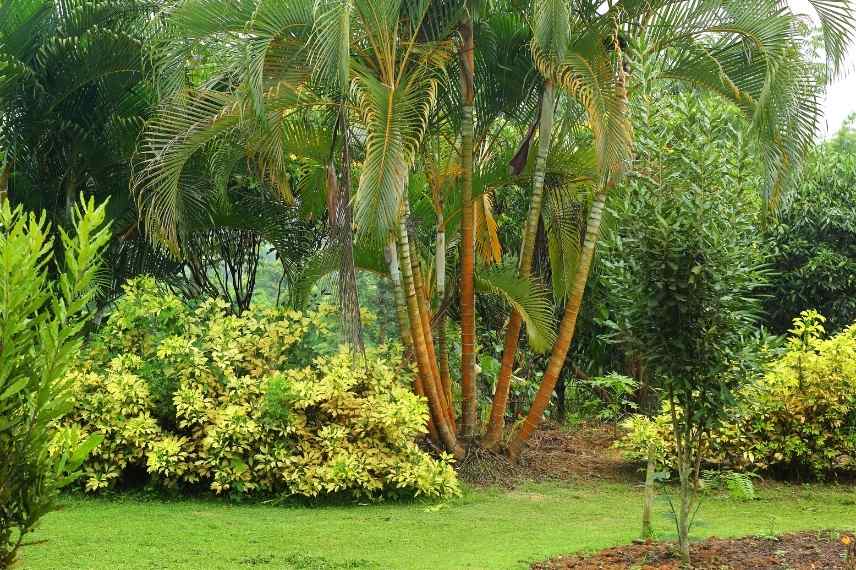 In this garden, a palm tree visually structures the space, adding significant relief
In this garden, a palm tree visually structures the space, adding significant relief
- Become a fan of the English mixed-border: this wide flowerbed combining free-flowing perennials with some annuals, grasses, and certain shrubs is fantastic for adding soft volume, colour, and, in short, relief to your garden. It is particularly striking in large gardens where the volume will be ample, and in smaller spaces, it can be reduced in size while maintaining the spirit of abundant vegetation.
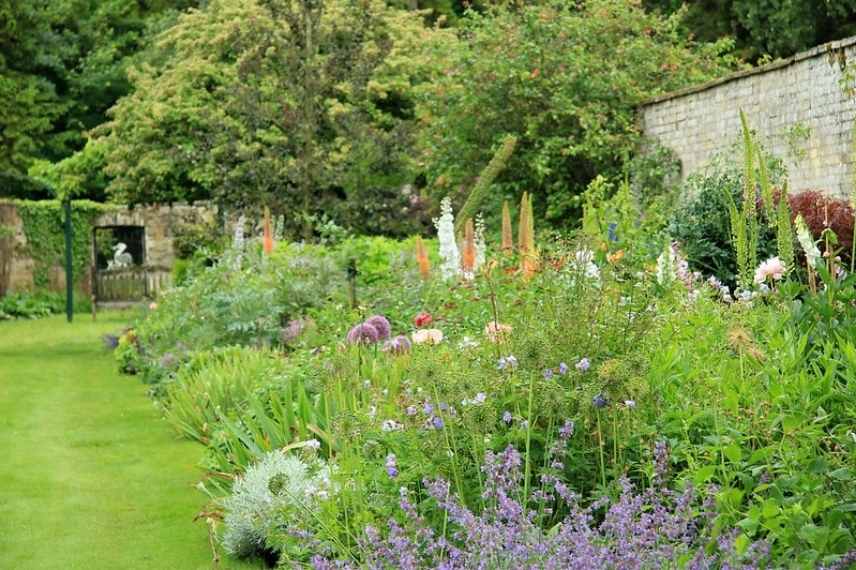 This mixed-border significantly enriches the space over a large area (© Karen Roe)
This mixed-border significantly enriches the space over a large area (© Karen Roe)
- Incorporate some ‘sculptural’ shrubs: whether planted in large pots or within beds, shrubs I would describe as ‘totems’ are useful for drawing attention to an original plant mass and interesting volume in their design (Coppice of Acer griseum, pagoda dogwoods, Lagerstroemia, topiaries of conifers, boxwood, or holly). Don’t forget to include species with remarkable bark that will be enhanced in winter, providing a focal point.
- A Mauritius grass (Zoysia tenuifolia) can also add relief in a less-used area of the garden: this grass naturally forms small domes, creating a gentle undulation, much like a moss garden.
→ Also read Jean-Christophe’s tips on how to create a beautiful shrub bed.
Read also
Creating a natural pond in your gardenPlay with colours
It is well known that colours have a strong visual power that should be fully utilised in a flat garden to awaken it and provide contrasts:
- Play with the colour variations of trees and bushes: favour a few deciduous species that will provide an interesting visual effect in autumn and winter, animating your garden visually throughout all seasons. Many species are involved, among the most beautiful in terms of foliage: Gingko biloba, Cercidiphyllum japonicum, Parrotia persica, Hamamelis, Quercus palustris, Quercus coccinea, Japanese Maples, and some interesting ones in terms of bark: Birches, Stewartias pseudocamelias, Lagerstromias, Acer davidii... Also integrate spring and summer flowering bushes to bring colour throughout the seasons.
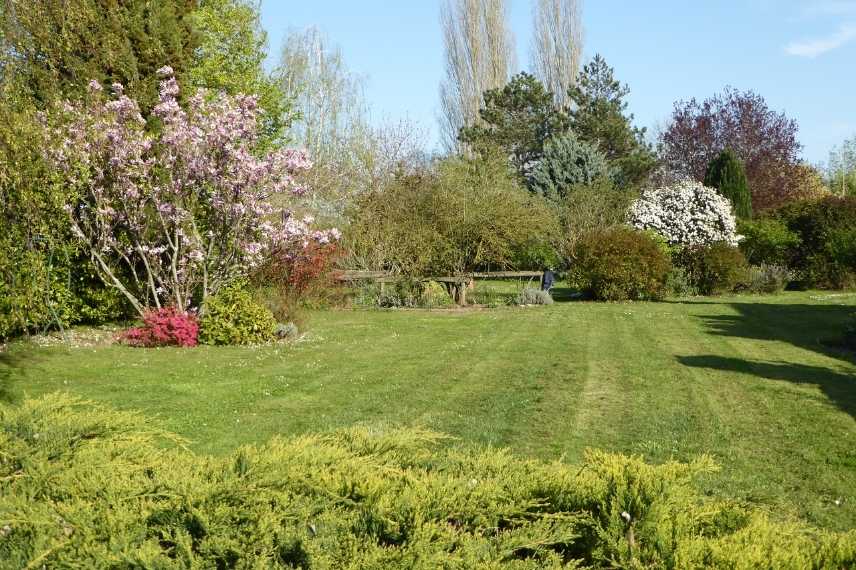
Flowering of a magnolia and an azalea, playing with grey, green, and purple colours, the low stratum of a Juniperus horizontalis… The garden becomes less monotonous (© Gwenaëlle David)
- Play with the green tones of foliage: from acid green to soft green, from grey-green to blue-green, variegated (marginate, maculate, speckled with cream or yellow), red to purple foliage to black foliage… all these shades of green are assets that can punctuate your garden, offering different nuances and depths of field.
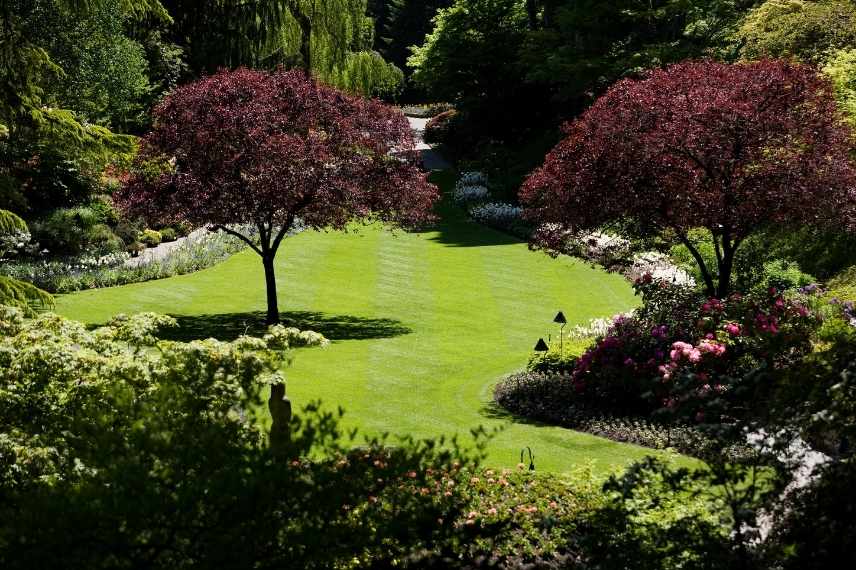
The inclusion of a few purple trees magically dresses a flat garden. This one features a particularly intricate design in its lines, accentuating the relief effect.
- Play with the colours of flowers and foliage: blue tones are useful for adding depth and contrast with lighter colours, while purple trees stimulate the eye. They should just be used wisely. Associating complementary colours from the colour wheel always allows for beautiful visual perceptions, and perennials with warm and vibrant colours are particularly useful for bringing a lovely dynamic to the flat garden.
A few examples in French famous gardens
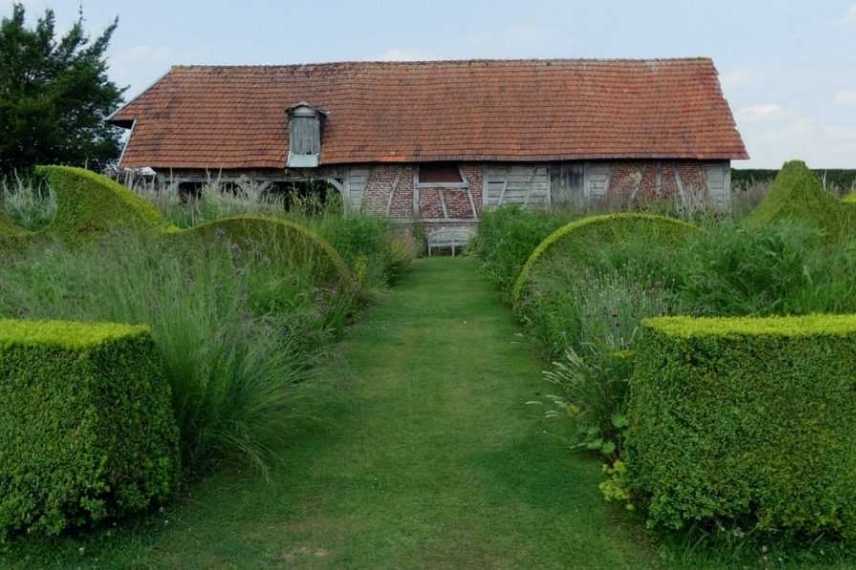
The Plume Garden in Normandy, with sculpted patterns in the vegetation complemented by soft plants, plays with a particularly flat terrain (© Alexandra Lambert)
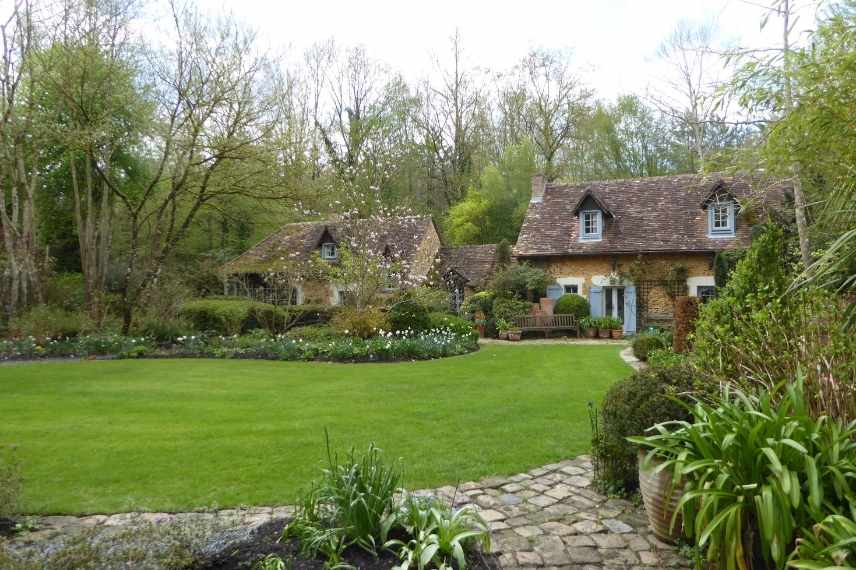
At the Petit-Bordeaux Atmosphere Garden in Sarthe, curved lines, pavements, and beds composed of different strata create green chambers that make the flatness of the terrain forgettable (© Gwenaëlle David)
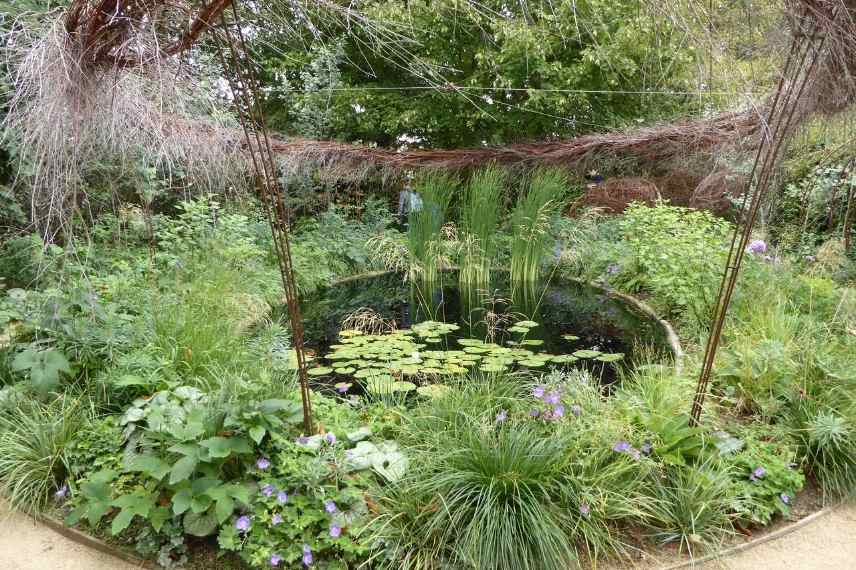
At the Domaine de Chaumont-sur-Loire, a circular water feature and its plantings add significant relief to this flat part of the garden (© Gwenaëlle David)
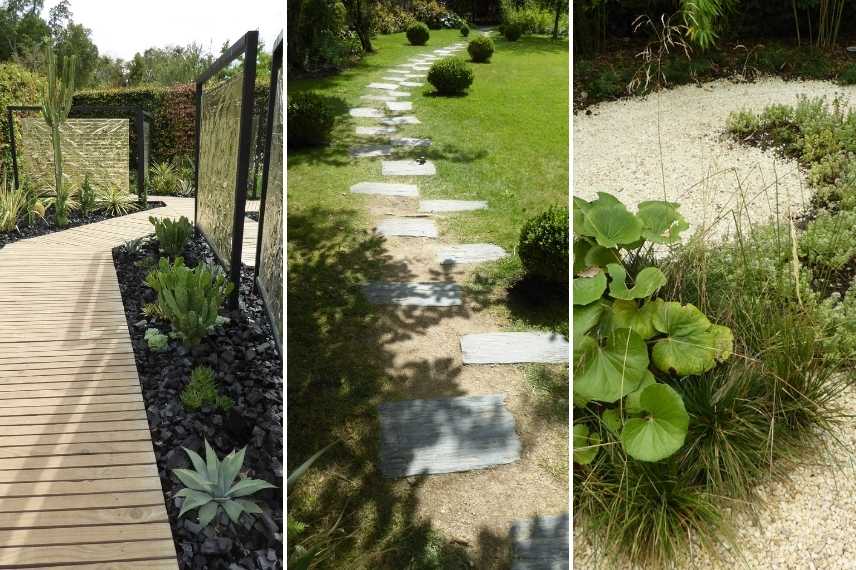
Also at the Domaine de Chaumont-sur-Loire, several examples of perspective play with curved or broken paths blur the lines and make the terrain appear less flat (© Gwenaëlle David)
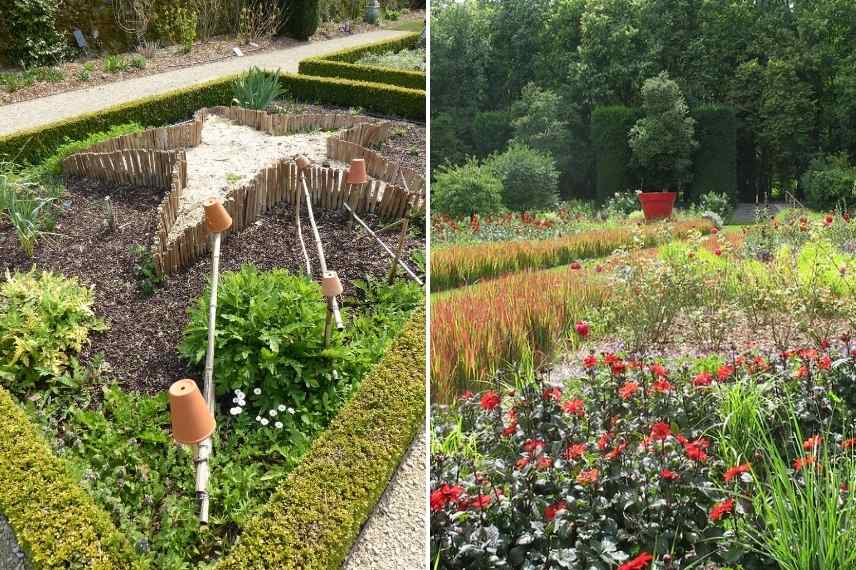
Structuring boxwood borders at the Colbert Vegetable Garden (Anjou) on the left; on the right, warm colours rhythm the beds of the Rivau Gardens (Touraine), echoing a giant pot (© Gwenaëlle David)
- Subscribe!
- Contents
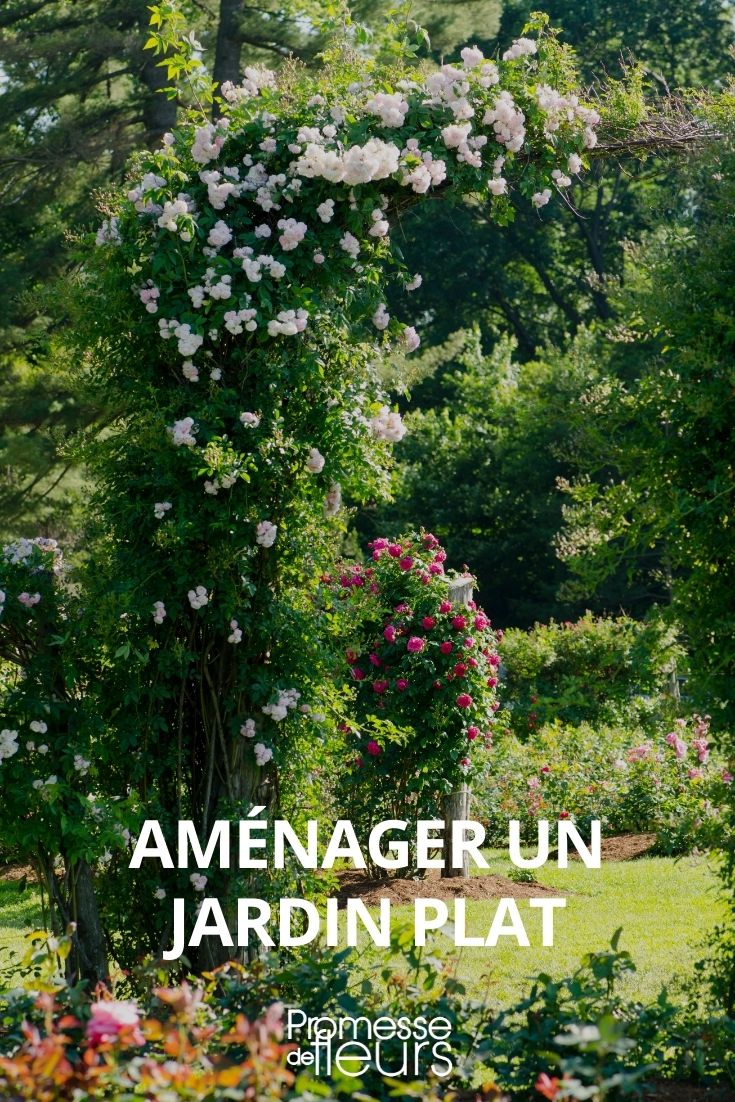































Comments